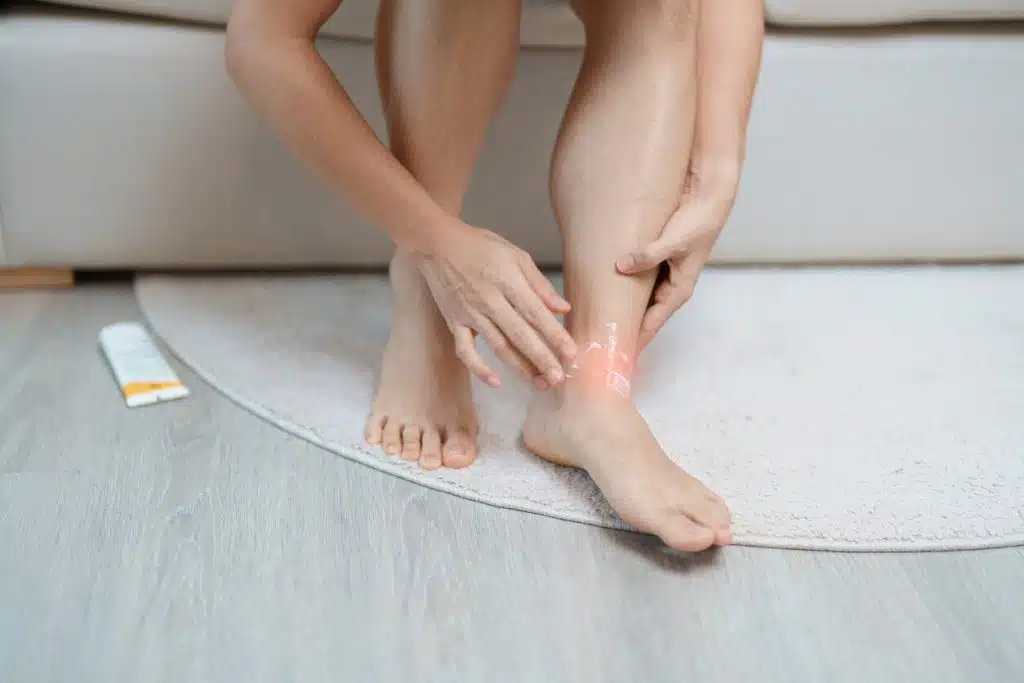
Shin splints are a frustrating injury that can stop even the most dedicated runners in their tracks. Many runners experience an aching, throbbing pain along the inner edge of the shin. This pain disrupts training plans and racing goals and can even make simple daily movements uncomfortable. By understanding what actually causes shin splints, runners can take steps to avoid them and stay healthy.
This article explores the most common reasons for shin splints. You will also learn when to see a sports orthopedic doctor and where to get help in Central Maryland.
1. Overuse and Sudden Increase in Activity
A very common reason behind shin splints, or medial tibial stress syndrome, is overuse. This typically happens when people increase their training intensity or distance too quickly. The muscles, tendons, and tissues around the shin can become irritated and inflamed. This is because they have not had enough time to adjust to the added stress. Even experienced athletes can develop shin splints if they suddenly make big changes to their workout routine.
People who work out intensely but irregularly, or “weekend warriors,” are also at higher risk. The best way to reduce the chance of shin splints is by gradually increasing your workout intensity and distance.
2. Poor Running Form
Good running form plays a key role in preventing injuries. Runners who strike the ground with excessive force on their heels or toes can place unnecessary stress on the lower legs. It is a similar case for those who experience excessive inward rolling of the feet, which is called overpronation.
These movement patterns create added tension along the shin, which may result in discomfort or even pain over time. One effective way to address these issues is through video analysis or working with a coach.
3. Worn Out or Unsupportive Shoes
Running shoes provide essential support and cushioning, but they gradually lose these qualities with use. If shoes are overly worn, have thin soles, or are not suitable for a runner’s foot type, the shins may be impacted. They will be forced to absorb more impact than they should. This increased stress can lead to discomfort or even injury.
Running on hard surfaces while wearing inadequate footwear further increases the risk. It does so by causing repeated trauma to the lower legs. Investing in supportive, well-cushioned shoes can reduce strain on the shins. This helps protect your legs and ensures a more comfortable running experience.
4. Running on Hard or Uneven Surfaces
Hard surfaces such as pavement and concrete can be particularly challenging for runners and is a common reason for shin splints. Each step generates repetitive impact forces that travel up the legs. This increases the risk of injuries, including shin splints. On the other hand, running on softer surfaces like trails or grass may be gentler on the shins.
However, the uneven terrain of these surfaces can pose its own risks. This includes twisting an ankle or placing additional strain on the lower legs. To mitigate these risks, alternating between different running surfaces is highly beneficial. This approach reduces the repetitive stress linked with consistently running on hard surfaces. It also minimizes the hazards of uneven ground.
Adopting a varied running routine can help protect your legs. Changing your exercises balances impact forces and reduces overall strain.
5. Muscle Imbalances and Poor Flexibility
Tight or weak muscles in the calves, hamstrings, or other areas of the lower legs can create additional strain on the shins. When certain muscle groups are stronger or tighter than others, they can disrupt your natural movement. This places uneven pressure on the shin and causes discomfort or pain over time.
To address this, incorporate regular stretching, cross-training, and targeted strength exercises into your routine. These practices help improve flexibility and create balanced muscle strength. This can significantly reduce the risk of shin-related injuries. Maintaining flexible and well-balanced muscles is key to keeping your shins healthy and injury-free.
6. Ignoring Pain and Continuing to Train
It is not uncommon for runners to ignore shin pain, believing they can simply “push through” it. However, this approach often exacerbates the problem. Shin pain is the body’s way of signaling that it needs recovery time. Continuing to train despite discomfort can turn a minor irritation into a more serious condition. Listening to your body and taking rest days when needed is critical for preventing injuries. Giving your shins time to heal ensures pain does not progress into a chronic issue.
7. Flat Feet or High Arches
Structural differences in foot shape can affect how your legs absorb impact during running. This includes flat feet or high arches. These differences may place extra strain on the shins, increasing the likelihood of injury. Custom orthotics or shoe inserts designed to suit your specific foot structure can offer additional support.
By improving alignment and cushioning, these tools help optimize shock absorption. They also reduce tension on the lower legs. Addressing foot-related imbalances can play a significant role in preventing shin splints. A trusted sports medical doctor near you can help with this.
Treatment for Shin Splints in Baltimore, MD
Shin splints do not have to derail your running goals. Common causes are overuse, poor footwear, wrong running form, hard surfaces, muscle imbalances, and ignoring pain. Runners who respect their body’s limits and make thoughtful adjustments can stay healthy and injury-free.
Do you need a trusted sports orthopedist near you to address shin splints? Trust The Centers for Advanced Orthopaedics – Orthopaedic Associates of Central Maryland Division. Our team understands the unique needs of runners and will help you get back on track safely. Call us at (410) 644-1880 or use our online appointment request form for orthopaedic sports medicine near you.
We look forward to serving you!
Sources:
https://my.clevelandclinic.org/health/diseases/17467-shin-splints
https://www.mayoclinic.org/diseases-conditions/shin-splints/symptoms-causes/syc-20354105
https://www.mayoclinic.org/diseases-conditions/shin-splints/diagnosis-treatment/drc-20354110


